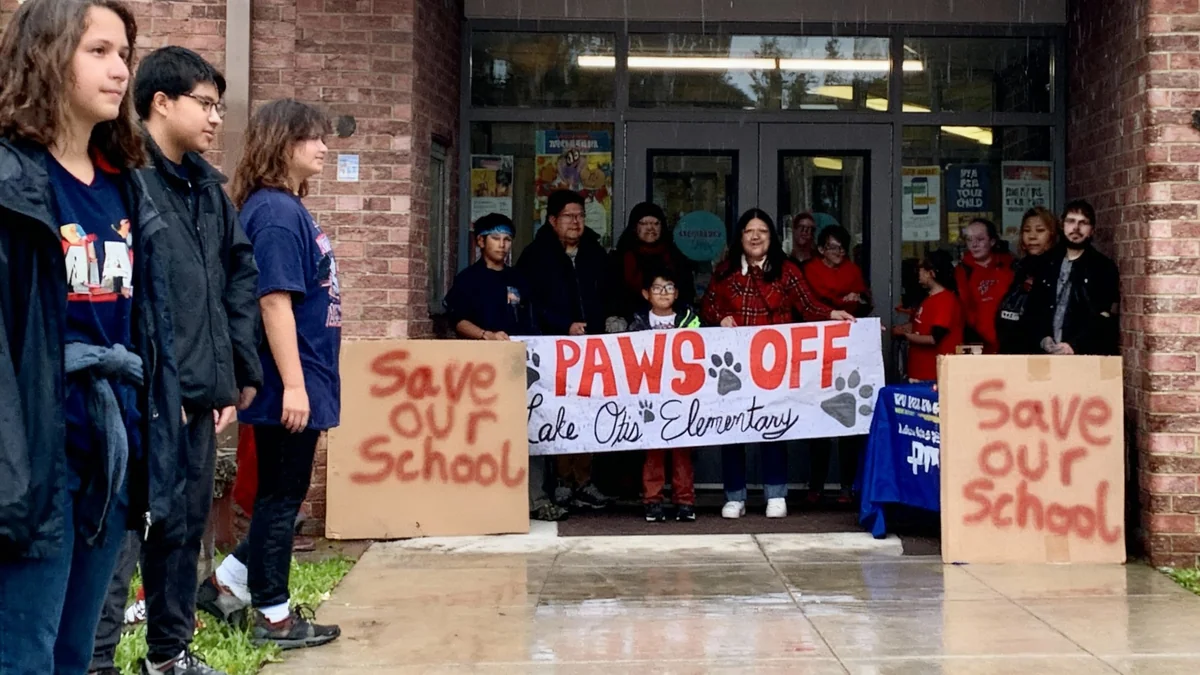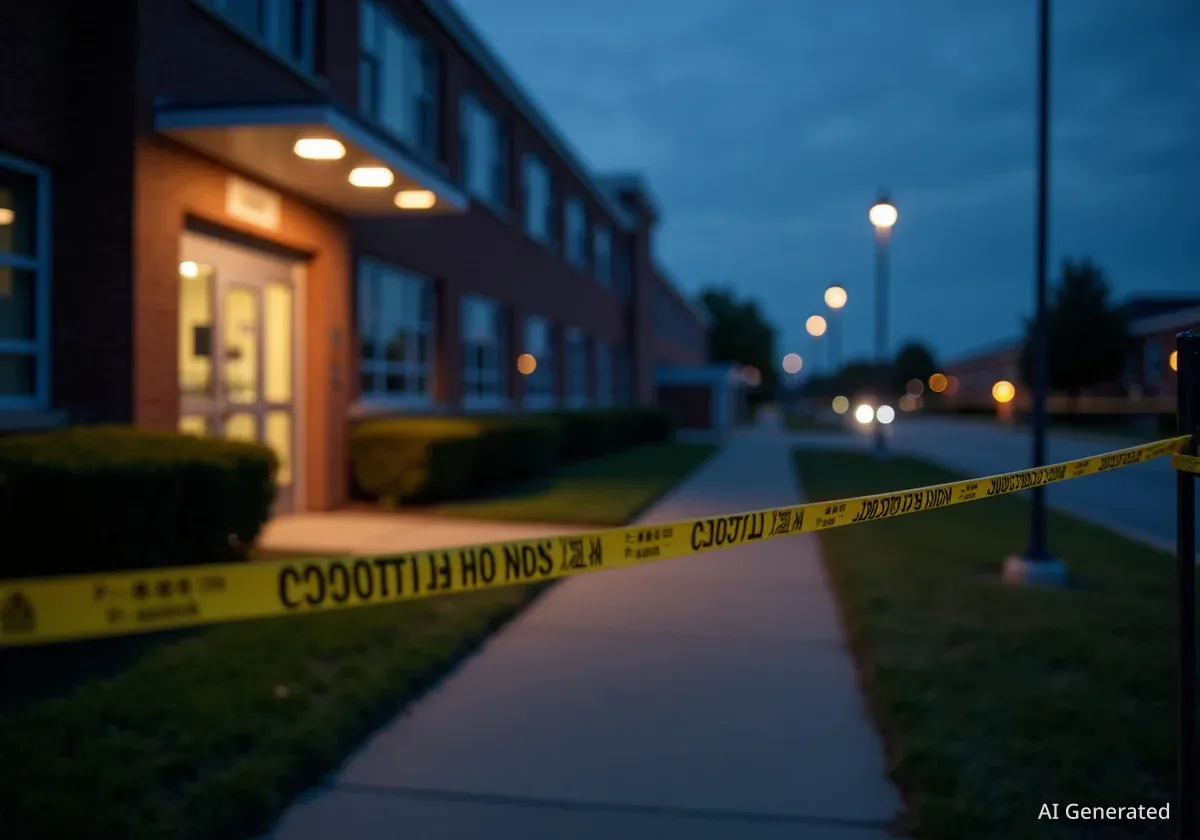The Anchorage School District is considering a proposal to close two elementary schools, citing significant under-enrollment and the need to consolidate resources. The recommendation has triggered a swift and organized response from parents and community members who are fighting to keep their neighborhood schools open.
Lake Otis Elementary in Anchorage and Fire Lake Elementary in Eagle River are the two institutions recommended for closure and repurposing. District officials point to capacity figures as a primary driver for the decision, while families argue the schools are vital community hubs where their children are thriving.
Key Takeaways
- The Anchorage School District has recommended closing Lake Otis and Fire Lake elementary schools.
- Superintendent Jharrett Bryantt cites low enrollment, with Fire Lake at 48% capacity and Lake Otis just over 50%.
- Parents have organized protests, created a Facebook page, and started an online petition with over 600 signatures to save Lake Otis Elementary.
- Special consideration is being raised for students in the Life Skills program, who may face significant challenges with a transition.
- The district plans to hold three community meetings before the school board votes on November 18.
District Cites Declining Enrollment and Resource Strain
The recommendation to close the two schools stems from a broader district-wide issue of declining student enrollment. According to Superintendent Jharrett Bryantt, the low numbers at these specific schools create significant operational challenges.
In an interview on October 6, Bryantt detailed the capacity issues. "Fire Lake Elementary School is at about 48% capacity and Lake Otis is a little over 50% capacity," he stated. These figures fall well below the district's operational goals for efficient facility use.
Enrollment by the Numbers
- Fire Lake Elementary: Operating at approximately 48% capacity.
- Lake Otis Elementary: Operating at just over 50% capacity.
The superintendent explained that the consequences of under-enrollment extend beyond empty classrooms. It directly impacts the quality and availability of educational services for the students who remain.
"So why is that an issue? Because when schools continuously lose enrollment, they lose services. These are schools that would be more likely to have a combination classroom, more likely to share services with another elementary school, and more likely to not have the levels of academic support that I’m aspiring to have in all of the elementary schools."Jharrett Bryantt, Anchorage School District Superintendent
The district's proposal also involves repurposing the buildings. The current plan suggests moving existing charter schools into the Lake Otis and Fire Lake facilities, allowing the district to address the maintenance costs of aging buildings while centralizing certain programs.
A Community Mobilizes to Protect Its School
In response to the district's recommendation, parents at Lake Otis Elementary have launched a coordinated campaign to save their school. They argue that enrollment numbers do not tell the whole story of a school's value to its students and the surrounding neighborhood.
Recently, parents, students, and staff gathered outside the school, holding signs to raise awareness and protest the potential closure. Brandy Kesteloot, a parent at the school, was among those advocating to keep its doors open.
"We just don’t want to close down something that our children are thriving in," Kesteloot said, capturing the sentiment of many families who feel the school provides a unique and supportive environment.
The effort has moved online as well. A Facebook page, "Keep Lake Otis Elementary Open for Our Kids," has become a central hub for organizing. An associated online petition has already gathered more than 600 signatures from supporters who want the school board to reconsider the proposal.
Focus on Students with Special Needs
A significant concern raised by parents is the impact a closure would have on students with special needs. For these children, consistency and familiarity with teachers, staff, and the physical environment are critical to their success.
The Challenge of Transition
Changes in routine and environment can be particularly disruptive for children in specialized programs. Establishing new support systems, training new staff on individual needs, and adapting to a different school culture can be a long and difficult process for both students and their families.
Jacqui Higgins, whose daughter is enrolled in the Life Skills program at Lake Otis, voiced deep concern about the potential upheaval. She explained that moving to a new school is not a simple matter of transferring records.
"It is complicated and difficult to train new schools every time on the needs of your children," Higgins explained. The established relationships and specialized support systems at Lake Otis are, for her and other parents, irreplaceable assets that a new school would have to rebuild from scratch.
Next Steps and Public Input
The Anchorage School District has emphasized that the recommendation is not final and that public feedback is a crucial part of the process. To facilitate this, the district has scheduled a series of "community conversations" to hear from parents and answer questions.
These meetings are designed to provide a platform for open dialogue before a final decision is made. The district has scheduled three separate events to accommodate families from different areas:
- Wednesday, Oct. 29: 6 to 8 p.m. at Bettye Davis East High School
- Thursday, Oct. 30: 6 to 8 p.m. at Chugiak High School
- Saturday, November 1: noon to 2 p.m. at the ASD Education Center
Following these community meetings, the proposal will be presented to the Anchorage School Board for a final vote. The board is expected to make its decision during its meeting on November 18. The outcome of that vote will determine the future of Lake Otis and Fire Lake elementary schools and the communities they serve.





